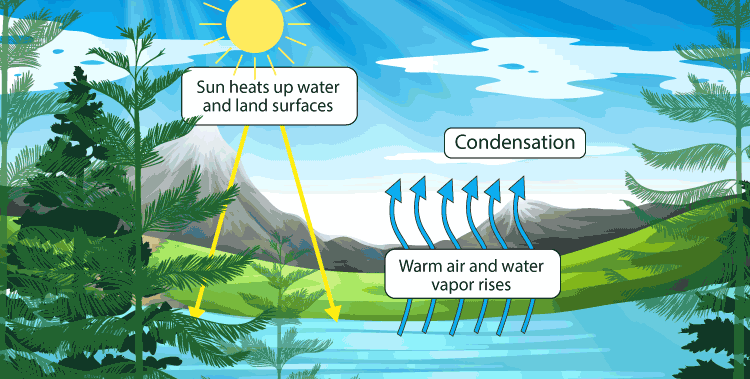How do we get rain? Why do clouds appear dark in the sky just when it is about to rain?

These clusters are clouds which we see up in the sky. Before understanding about the formation of clouds, let us understand a few important terms.
Evaporation: It is a process where an increase in temperature or pressure causes a substance to change from liquid state to gaseous state. It is a fundamental process in the water cycle.
Condensation: Essentially the reverse of evaporation, a substance converts from a gaseous state to a liquid state. It is crucial in the formation of clouds.
Cloud Formation
Clouds are tiny droplets of water or crystals of ice, which float in the air. They are able to float since they are very small. Air gets moist or damp as a result of the evaporation process that takes place by the sun. This moist air rises from the surface of the earth and progresses higher only to become cooler furthermore. At sufficient altitudes, water vapour present in the air condenses to form droplets. These droplets remain in the air and appear to us as clouds.
After reaching a point called frost point in the atmospheric air, droplets stop rising further.
Dewdrops in the sky, then come together and form large water droplets – a cluster of water molecules, which we address as clouds. The clusters start getting heavier as a result of millions of droplets tending to clamp with them. The quantity of droplets in the cloud depends upon the atmospheric temperature and pressure.
Once these clouds get denser and saturated, they fall down to the ground as precipitation which we call rains.
Snow or hailstones are a result of larger water molecules falling to the ground because of colder temperatures in a region.
To know more about clouds and how rain forms, please register at BYJU’S.
Related links: Difference between Transpiration and Evaporation
Comments